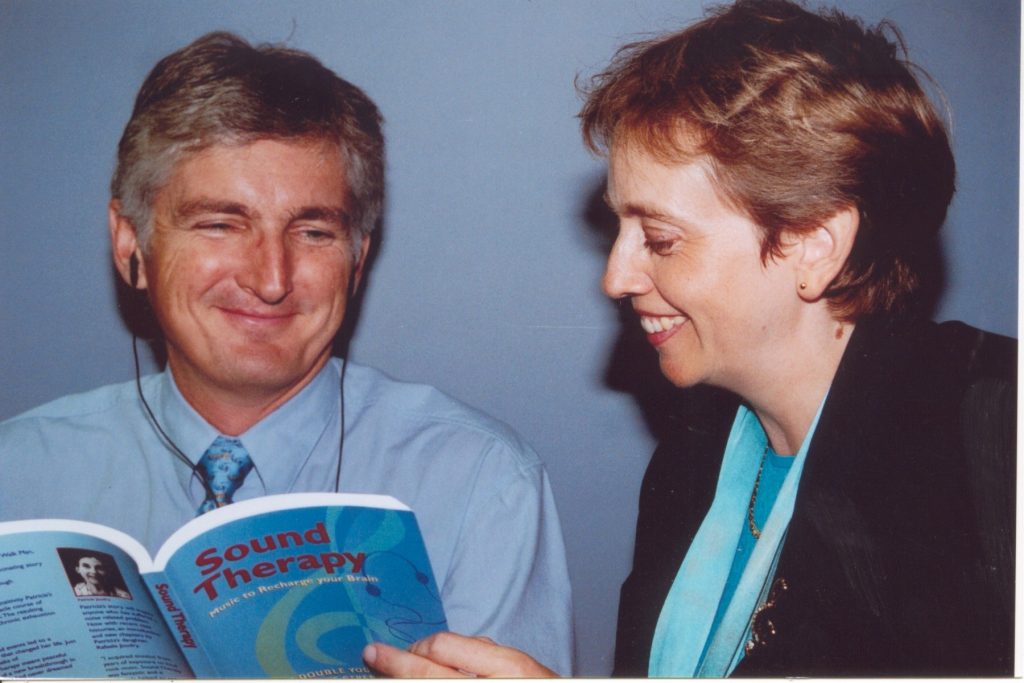2.1.1 What is Sound Therapy?
What is Sound Therapy?

Recent Research on neural plasticity, auditory neurology and sensory integration corroborates the findings about Sound Therapy’s therapeutic impact.
Sound Therapy is a therapeutic listening program based on the work of the French ear specialist, Dr Alfred Tomatis. The program uses specially processed and filtered classical music to retrain the ear and stimulate the brain.
The Joudry program developed by Sound Therapy International is uniquely known for being portable, affordable and easy to use. The company’s mission has always been to make this method affordable and accessible to all who need it. This extends to providing very accessible and informative support materials so that the listeners become empowered to conduct their own listening programs.
Sound Therapy is much more than music therapy. It is a listening program which has been shown to enhance neural plasticity and improve brain integration. Working beneficially on many aspects of both neural and auditory function, it serves as both a brain enhancement program and a natural hearing improvement program.
The term “sound therapy” is used in many different contexts and includes methods as diverse as chanting, crystal bowls and tuning forks used to deliver a particular frequency to a particular part of the body.
The Sound Therapy offered by Sound Therapy International is specifically the work derived from the discoveries of Dr Tomatis. This program uses classical music or voice, in a recorded form, which has been processed by the particular filtering and activating methods that Dr Tomatis developed.
This activated music works through the ear and the auditory system to enhance brain function, hearing and many other aspects of neural integration. It is scientifically based and has received world wide recognition for several decades. The results have been clinically observed and proven, and have advanced our understanding of the importance and role of the ear in our overall wellbeing.

What modalities does Sound Therapy SYNERGY combine?

Tomatis based his discoveries on his knowledge of medicine, psychology and the therapeutic use of sound.
In his early research, Dr Tomatis drew on knowledge from the fields of medicine, psychology and the therapeutic use of music. His training as an ENT enabled him to apply his embryological knowledge and his ear training to understand how sound could impact the ear.
During the course of developing the program, Tomatis developed a great interest in psychology and drew upon this field for many of his theories. He was interested in the psychological component of hearing and how this may effect the result of hearing tests. He also developed a keen interest in developmental difficulties faced by children, and explored this field in some depth.
Sound Therapy doesn’t fit into one specialty but crosses and integrates closely with many types of practice such as audiology, ENT, speech pathology, occupational therapy, music and voice training and remedial teaching.
Questions about price

Sound Therapy is about one tenth of the price paid for many clinic-based programs for tinnitus, remedial education or brain retraining.
It is important for those considering the program to understand that this is a therapy program, not merely a relaxation program. When compared to other therapies with similar attributes, Sound Therapy compares very favourably price-wise.
Some of the costs of the program are due to the exceptionally high quality sound of the music albums and the educational service provided by Sound Therapy International. The albums are recorded at very high resolution sound files to maintain the high frequencies and accurate harmonics in the music, which are essential for the therapeutic effect.
Our policy is that the program is delivered on the latest and most suitable technology available for delivering high quality, portable audio.
Our program equipment and components carry a 12 month replacement warranty if faulty. After that we offer a very reasonable replacement fee, for an unlimited period.
Sound Therapy International provides a high standard of customer service, giving information and advice to assist customers with their listening whenever it is required. As one of our Synergy Consultants you will be expected to provide a similar level of support to your own clients.

In order to draw a value comparison, we can say that the cost of the self help program works out at less than two dollars an hour, compared to twenty dollars an hour for supervised treatment in a clinic, making it a very cost effective method of doing Sound Therapy.
Once a client owns the program, they have it for permanent use, so will not be faced with the problem of the benefits wearing off over time, as happens with limited, clinical treatment programs.
Why does everyone need Sound Therapy today?

Low frequency sounds (machine noise) drain energy from the brain and make us stressed and tired. Sound Therapy builds and enhances brain function with gentle, high frequency sound.
In this world we are constantly bombarded with low frequency machine noise. The effect of this noise is to gradually shut down the ear, and drain energy from the brain. Almost everyone is suffering from some degree of high frequency hearing loss without even knowing it, and that is why stress and fatigue are so prevalent.
Sound Therapy counteracts the effect of this draining noise by stimulating the ear with high frequency sound. The high frequencies improve hearing and stimulate the brain, improving energy levels and reducing stress.
A good example is people who work on computers. They are often tired at the end of the day because of the low drone of the computer noise. Feedback has shown that if office workers listen to Sound Therapy while working on the computer, they generally find that they feel awake and energised at the end of the day.
Everyone wants to enhance their brain health and maintain robust brain function. Sound Therapy is a great support to this process, but is much easier than doing brain training exercises. The music, because of its complexity and stimulating filtering, in effect, does it for you!


